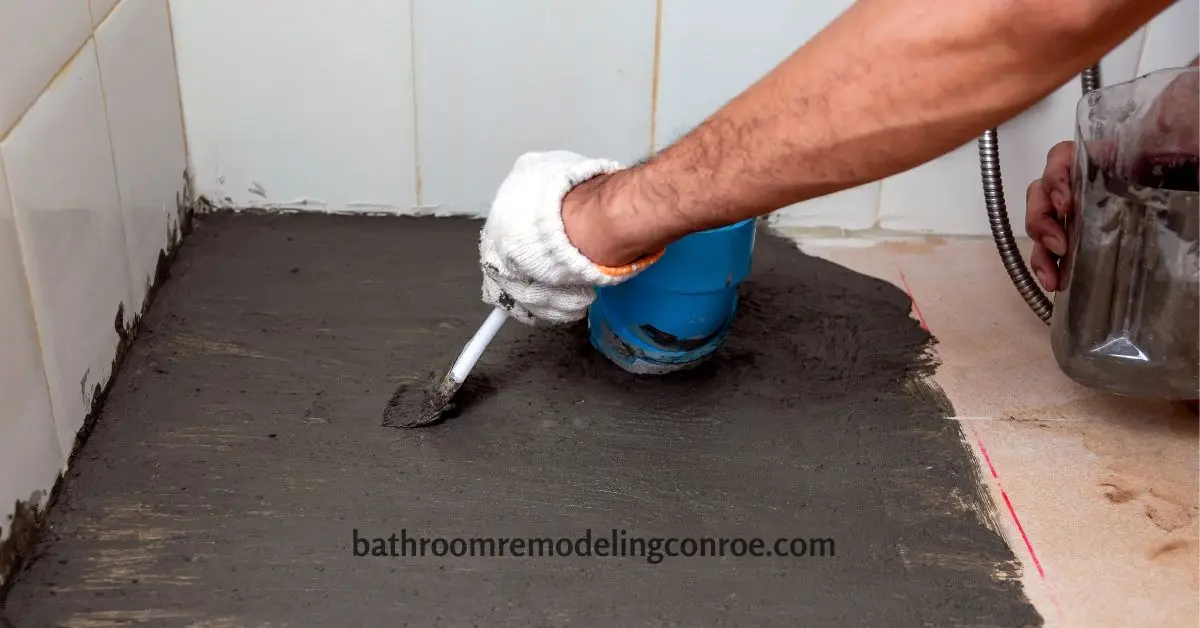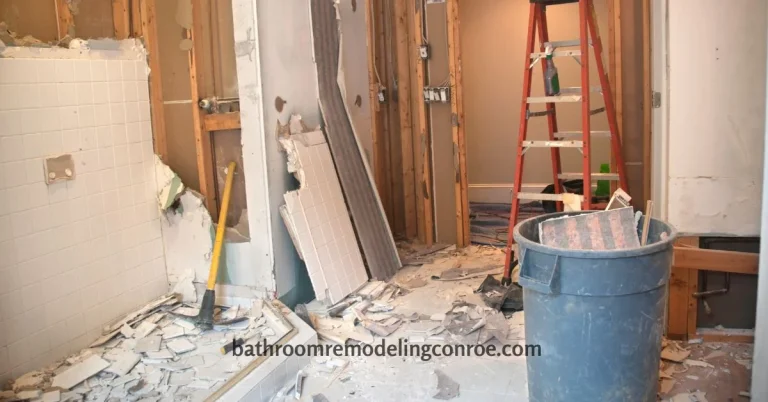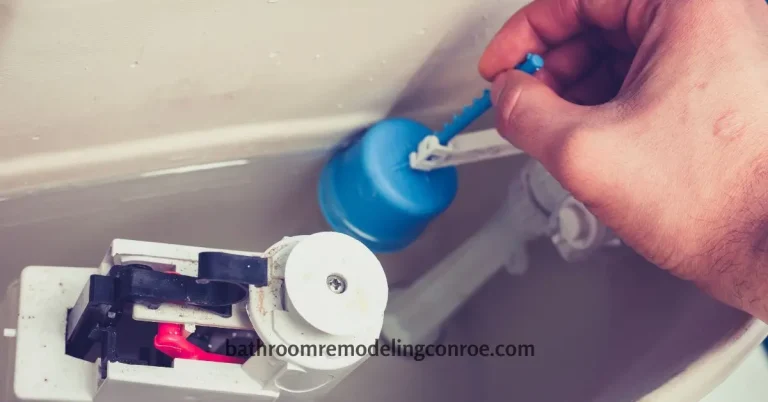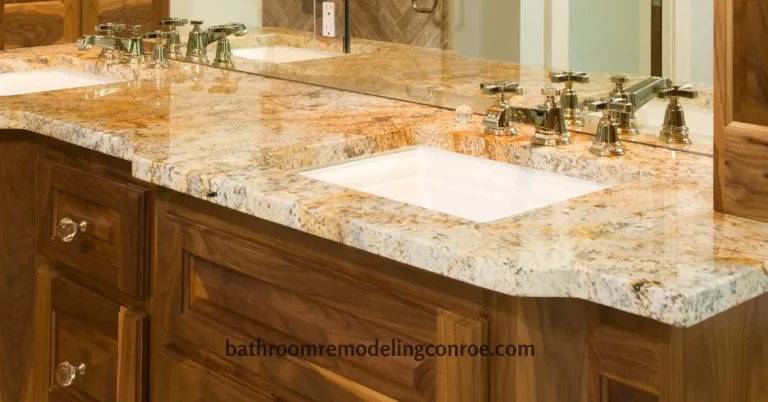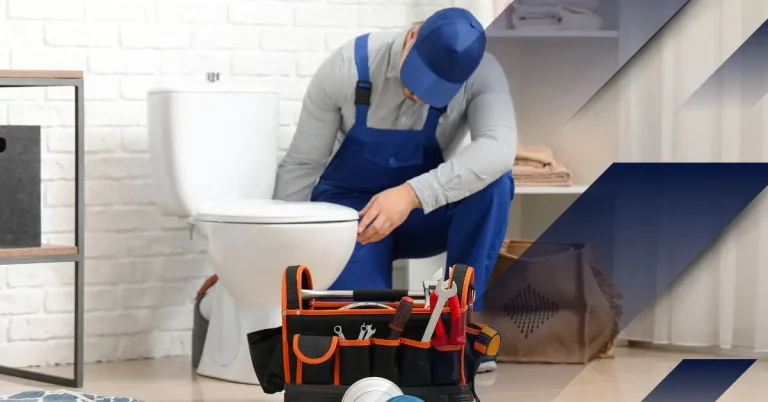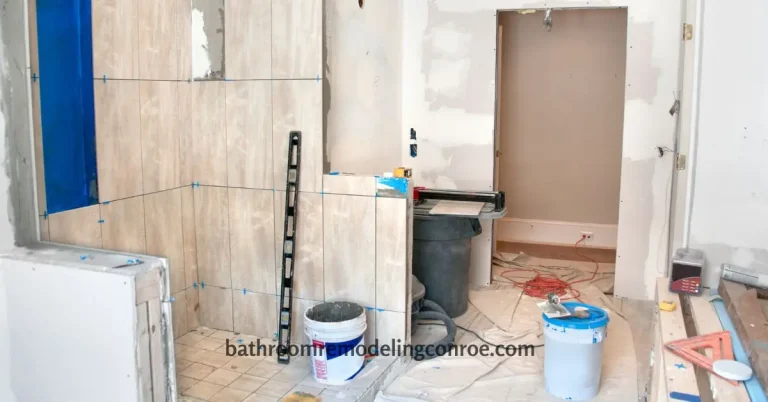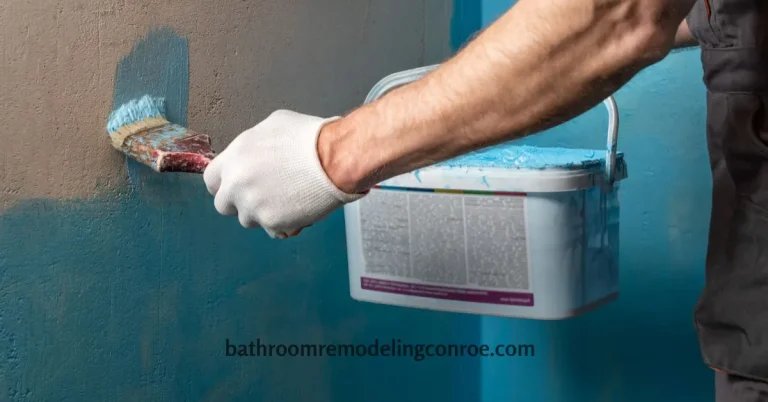DIY vs Professional Waterproofing: Which One Should You Choose?
If you’re considering bathroom waterproofing Conroe Texas, you might be weighing the pros and cons of a DIY approach versus hiring a professional. Both options offer unique advantages and potential drawbacks.
Whether you’re tackling a full bathroom remodeling Conroe or just focusing on moisture protection, here’s a detailed breakdown to help you make the right choice.
What is Bathroom Waterproofing?
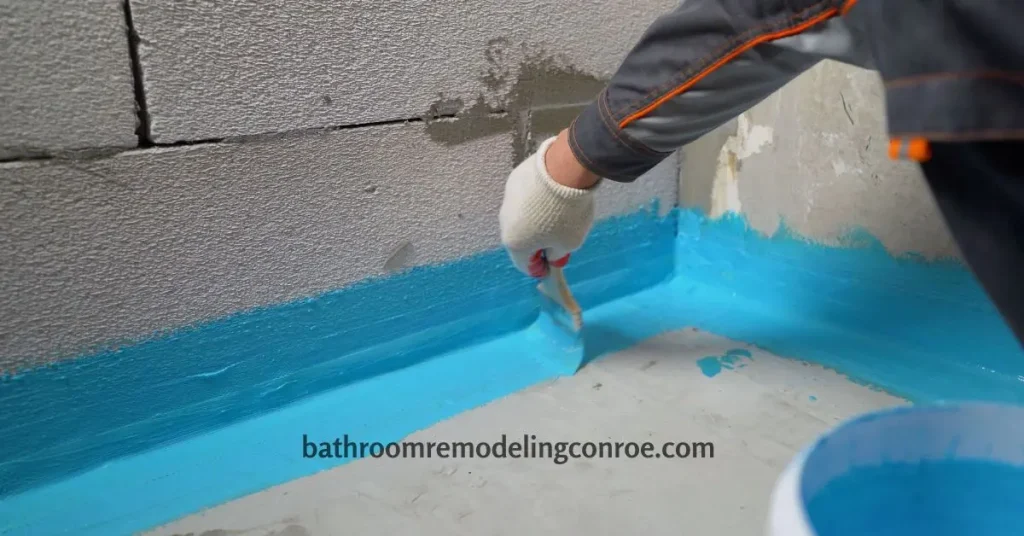
Bathroom waterproofing involves applying special materials to protect walls and floors from water damage. It’s essential in areas like showers, around sinks, and near bathtubs to prevent leaks and preserve the structure. When it comes to DIY vs professional waterproofing, the right choice depends on your skill level, budget, and the complexity of the project.
- Why Waterproofing is Essential: Waterproofing safeguards your home from moisture-related problems such as:
- Protecting Your Bathroom from Water Damage: Excess water can seep through cracks, damaging the subfloor and walls. Over time, this leads to mold growth, wood rot, or structural problems.
- Key Areas in the Bathroom That Need Waterproofing: Critical points include shower pans, under bathtubs, behind wall tiles, and flooring. These areas face constant exposure to water and require durable protection.
DIY Bathroom Waterproofing
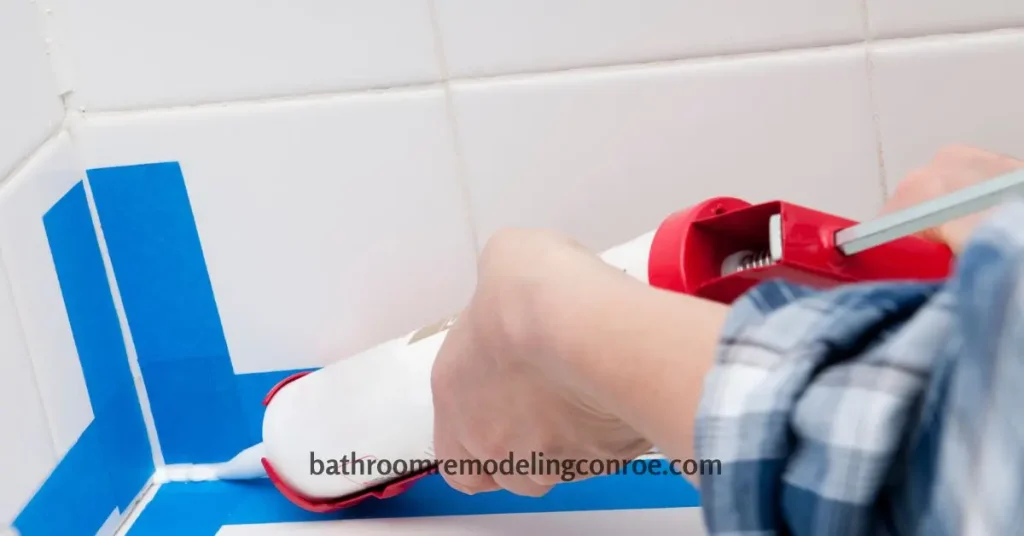
Taking on waterproofing yourself can seem appealing, especially for small repairs or first-time projects. However, it’s important to weigh the potential risks against the benefits.
DIY Waterproofing: Pros and Cons
Pros of DIY Waterproofing
- Cost Savings: You avoid paying for labor or service charges.
- Control Over the Project: You decide when and how it gets done.
- Flexibility in Timing: You can work at your pace, without waiting for scheduling.
Cons of DIY Waterproofing
- Time-Consuming: Preparation and application require patience and careful work.
- Requires Skill and Experience: Small mistakes can lead to failure down the line.
- Risk of Mistakes: Improper sealing or material application could compromise durability.
DIY Waterproofing Techniques
Home-based waterproofing requires materials like liquid membranes, sealants, and waterproofing sheets. Begin with proper surface preparation, then apply materials systematically, following the instructions for the product used.
Liquid Waterproofing for Bathrooms
Liquid waterproofing involves applying a thin layer of waterproof coating to walls and floors. Products like acrylic or polyurethane-based coatings are common in DIY projects. Apply evenly, allowing each layer to dry, to avoid weak spots.
When to Consider DIY Bathroom Waterproofing
Simple tasks like repairing a small crack or resealing a corner are feasible for DIY projects. If major water leakage issues exist, expert help may be better.
Risks of DIY Waterproofing Mistakes
Mistakes lead to expensive repairs. For example, improper sealing may create tiny gaps where moisture can enter, causing long-term problems like rot and mold.
Professional Bathroom Waterproofing
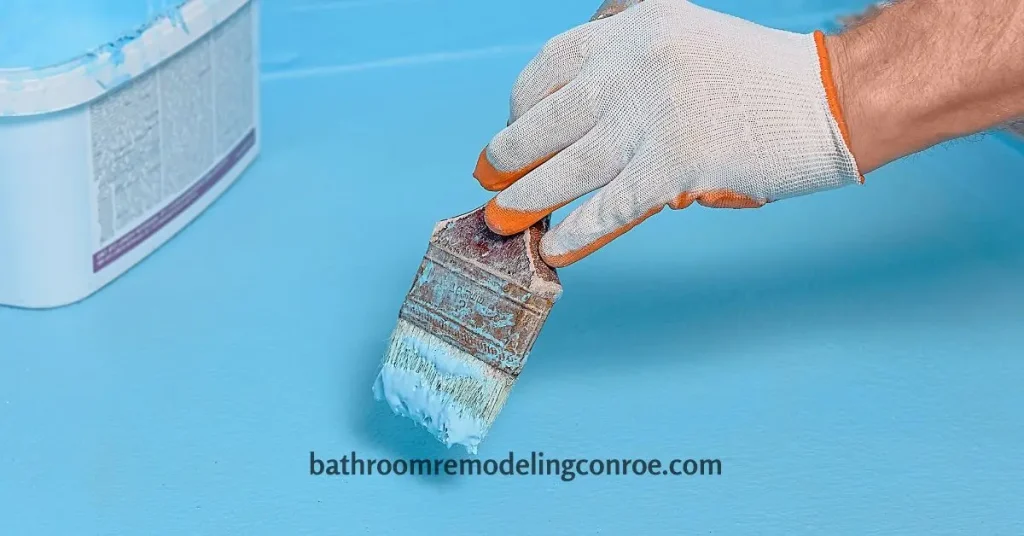
Hiring a professional ensures your bathroom gets full protection against water damage, especially for complex or large-scale needs.
Benefits of Professional Waterproofing Services
- Tailored Solutions and Expert Assessment
Professionals analyze the bathroom’s needs and select the appropriate materials and techniques. - Quality Workmanship and Materials
Trained workers and high-grade products ensure long-lasting results. - Long-Term Protection and Warranties
Most services include warranties, giving homeowners peace of mind.
Costs of Professional Waterproofing
Professional services vary in cost depending on the bathroom’s size and condition. Average prices range between $500 and $2,000, including labor and materials.
Professional Waterproofing vs. DIY Cost Comparison
While DIY costs may seem lower upfront, mistakes often require costly repairs. Professional waterproofing, though pricier initially, ensures durability and minimizes future issues.
Signs That Your Bathroom Waterproofing Has Failed
Recognizing failed waterproofing early can save you from costly repairs.
Common Signs of Waterproofing Failure
- Visible Mold Growth
Persistent mold in corners or along grout lines often indicates water is seeping through improperly sealed surfaces. - Peeling Paint or Wall Damage
Bubbling or peeling paint signals trapped moisture behind walls that needs attention. - Persistent Dampness
Wet surfaces and musty odors are warning signs of seepage.
How to Identify Failed Waterproofing
Inspect areas prone to water exposure. Look for discoloration on tiles or walls, cracked grout, or rising odors from mold.
Why Timely Repairs Are Important
The longer waterproofing failures are ignored, the bigger the problem grows. Address them quickly to avoid structural damage and expensive repairs.
Waterproofing Materials and Products
Choosing effective waterproofers depends on the project’s specifics.
Types of Waterproofing Membranes
- Sheet Membranes
Roll-on products that cover large areas, ideal for bathroom flooring. - Liquid Membranes
Popular for smaller or irregular areas due to their versatility. - Cementitious Coatings
Affordable and effective for permanently wet areas, like shower bases.
Professional Sealants vs. DIY Products
Professionals often use higher-quality products with better adhesion and durability. DIY sealants are more affordable but may lack the same effectiveness for complex projects.
Choosing the Right Waterproofing Material
Consider factors like exposure to water, temperature changes, and material compatibility with existing surfaces. Consult an expert to match the right product to your bathroom’s needs.
The Bathroom Waterproofing Process
Step-by-Step Waterproofing Process
- Surface Preparation
Clean the area thoroughly and fill cracks or gaps. - Application of Waterproofing Material
Apply membranes, coatings, and sealants as directed. - Curing Period
Allow all materials to dry fully before exposing them to water.
How Long Does the Waterproofing Process Take?
Most bathroom waterproofing projects take 1-3 days, depending on the space size and material type.
DIY vs. Professional Waterproofing: When to Seek Expert Help
Some situations require professionals to prevent costly fixes later.
Factors to Consider Before Starting a DIY Waterproofing Project
Evaluate your skills, tools, and the scope of the work to determine if it’s manageable on your own.
When Waterproofing is Part of a Larger Remodel
Larger renovations often include complex waterproofing that’s better left to skilled contractors.
Professional Help vs. DIY in Complex Waterproofing Situations
Intricate areas like multi-level showers, hidden pipes, or custom designs require expertise to ensure complete protection.
Waterproofing Maintenance and Upkeep
Proper maintenance extends your waterproofing system’s lifespan.
How to Maintain Waterproofed Surfaces
Regularly clean tiles, check for cracks, and replenish sealants in high-use areas.
Ensuring Longevity of Waterproofing Systems
Inspect grout lines, seams, and joints periodically to confirm they remain intact and watertight.
Common Waterproofing Problems and How to Avoid Them
Avoid damaged coatings by preventing harsh cleaning techniques or neglecting routine maintenance schedules.
Troubleshooting and Repairing Waterproofing Issues
How to Fix Leaks in a Waterproofed Bathroom
Small leaks can be repaired by resealing affected areas with waterproof caulk or repeating the membrane application process.
When to Call a Professional for Waterproofing Repairs
If problems cover large areas or affect structural elements, seek professional input immediately.
DIY Repair Techniques for Minor Issues
Reapply sealants to small gaps or cracks as a temporary fix. Monitor to ensure the issue doesn’t worsen.
The Pros and Cons of DIY Bathroom Waterproofing
Pros of DIY Waterproofing
- Save costs by avoiding service fees.
- Control how and when the project is executed.
- Learn valuable skills that can be applied in future tasks.
Cons of DIY Waterproofing
- Time-intensive preparation and application processes.
- Steep learning curve if inexperienced.
- Potential for costly mistakes if done incorrectly.
Professional Bathroom Waterproofing: Why It’s Worth It
Expertise and Experience of Professional Waterproofers
Their training allows for intricate techniques that improve coverage and prevent water seepage.
Faster Completion and High-Quality Work
Professionals complete projects quickly without sacrificing thoroughness.
The Peace of Mind with Warranties and Guarantees
A warranty ensures that any defects are rectified without extra costs.
FAQ: Bathroom Waterproofing
Final Thoughts on DIY vs. Professional Bathroom Waterproofing
Making the Right Decision for Your Home
Assess your budget, timeline, and project complexity to determine the right option for your needs.
Evaluating Your Budget and Timeline
DIY saves money but demands time and skills. Professionals offer quick, durable solutions.
Call to Action
If you’re considering bathroom waterproofing in Conroe, call us at (936) 286-3938 for expert advice and reliable services. Don’t compromise on your home’s protection; schedule your consultation today!
